We know that sunscreen is essential for skin, but what about sunscreen for our hair? Does hair really need to be protected from UV too? Turns out the answer is YES! We dig into the benefits of using hair sunscreen, plus we list 3 hair sunscreen products we recommend and why (regardless of hair color!)
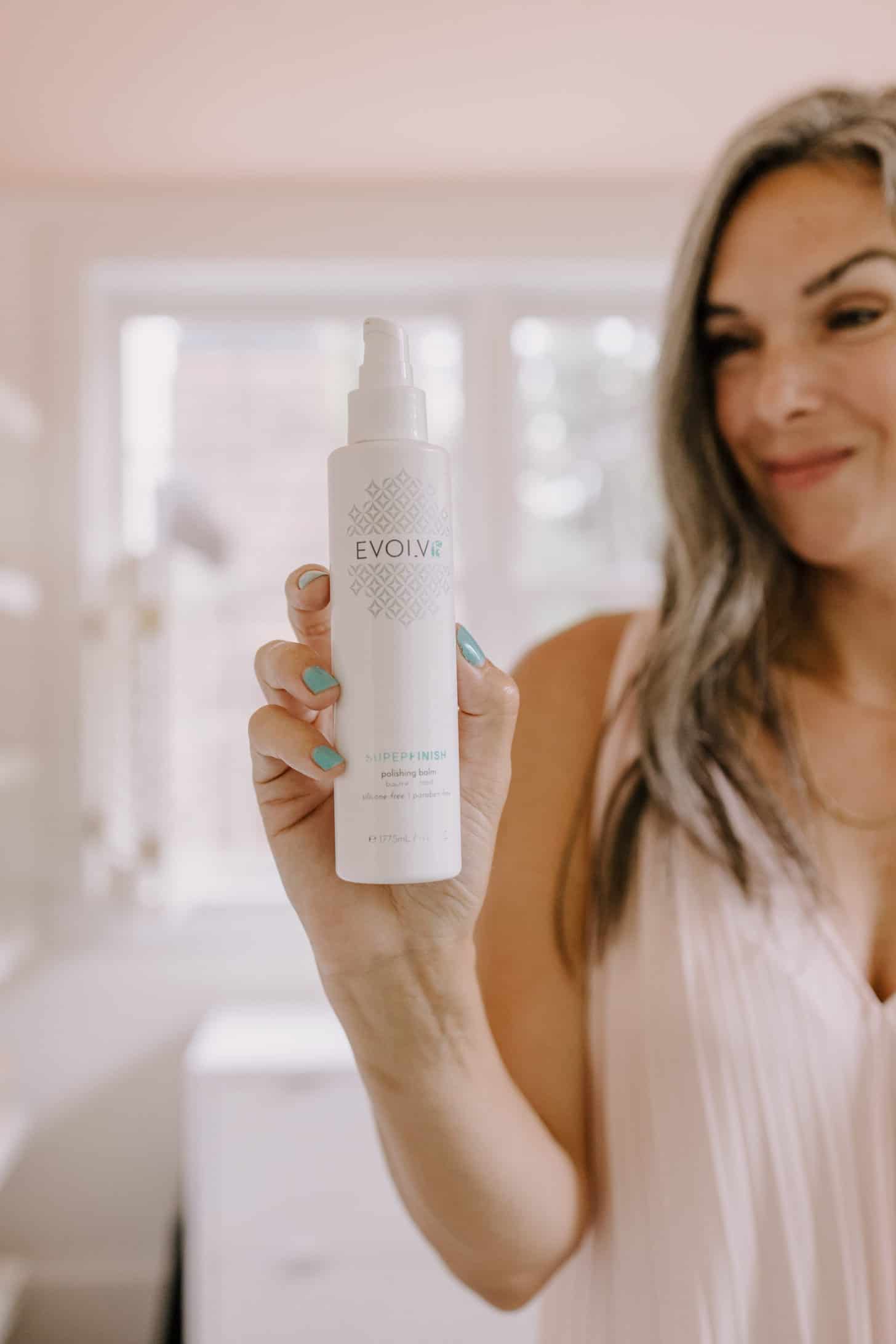
By: Lisa Fennessy. Reviewed by: Kate Noonan
I wouldn’t call hair SPF a daily necessity but for days when your strands will be exposed to the beating sun for hours on end…it has its perks.
IN THIS POST:
- Why you should consider using hair SPF
- What to look for in hair SPF
- Specific botanical UV blockers
- Do I need to reapply my hair SPF?
- Our top 3 best hair SPF picks
- FAQs about hair spf
- References
Why you should consider hair SPF for your strands
I first started looking into the validity of UV protection spray for hair or hair SPF because summer was approaching and I wanted to keep my gray hair from yellowing in the sun. Gray hair turns yellow or brassy for a myriad of reasons, including exposure to ingredients like EDTA in hair products, environmental pollutants (like cigarette smoke and exhaust), heat exposure, medicine and of course, UV exposure.
Molecular Biologist and Cosmetic Chemist Kate Noonan explains that hair is made up of 95% keratin protein. When hair is exposed to UV, it breaks down that keratin—specifically the part that gives hair its strength and shine. UV also fades hair color and can create hair-yellowing [1].
The kicker is, this applies to all hair colors, although some hair colors are hit harder than others.
Lighter and warmer hair colors (including gray hair) are more affected, while darker hair colors are not as affected. This is due to hair color’s pheomelanin content and lack of protective eumelanin.
Black hair, for example, has the more protective ‘black eumelanin’ and loses two-thirds less keratin than brown hair [4].
Light hair, on the other hand, contains something called pheomelanin. Kate explains that pheomelanin is a phototoxic melanin highest in red, blonde and warm brown hair that increases UV damage [5].
And if you think you’ve got it made because you color your hair…think again. UV also affects those with color treated hair. Says Kate, “Dye molecules slightly screen UV but these fade faster than natural color and leave brassy tones.”
The takeaway? Everyone with hair, regardless of hair color, can benefit from UV protection for their hair.
(And while we are at it, another way to counteract hair brassiness that happens in blonde and gray hair is by using a purple shampoo. More on why plus the ones we recommend here.)
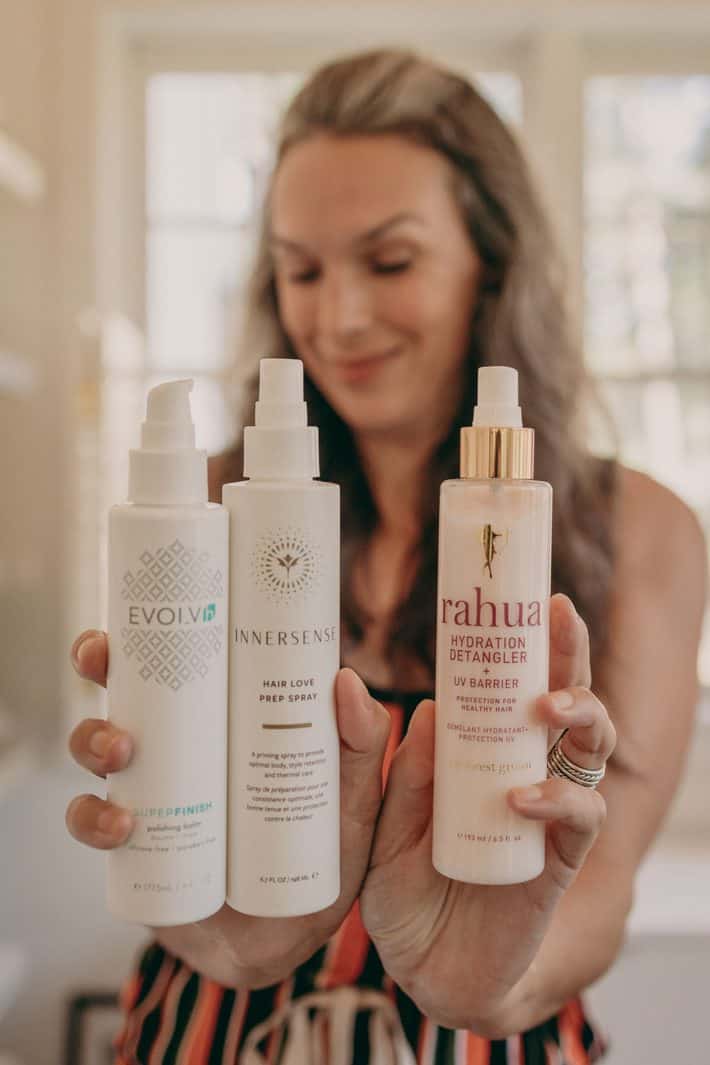
What to look for in a hair SPF
This was a bit of a sticking point for team TNK because when we talk about SPF, we advocate for choosing mineral blockers, like zinc and titanium dioxide, over chemical blockers like oxybenzone and octinoxate. But I haven’t met many people who are psyched to lube up their hair with white zinc…so if we are taking zinc off the table, that leaves us with a couple options.
We can talk about the “best of the worst” when it comes to chemical blockers and we can also look at plants that deliver antioxidants and block UV. Let’s zoom in on the latter.
RELATED: The best natural face sunscreens and the best nontoxic tinted face SPF.
Plants that block UV
One way to counter the lack of protective eumelanin, Kate says, is to use products rich in UV-blocking plant extracts to keep hair strong and glossy, which is supported in dermatology research [2,3,6,7].
As consumers we’ve seen messaging around plants providing UV protection, but since the FDA does not recognize plants as SPF (and SPF is an FDA regulated product), companies can’t claim specifics on their websites or on labels.
But the truth is, hair products with plant extracts that block UVB and UVA and neutralize radicals protect hair health and color [2,3]. We see the power of botanical ingredients in this Daud et al. study, which found that aloe vera screened UV when hair was exposed to 4 hours of UV a day for 25 days [8].
So with all of this in mind, we asked Kate to look into the specifics around plants and what they can actually do when it comes to blocking UV because we wanted to know more. Here’s the breakdown:
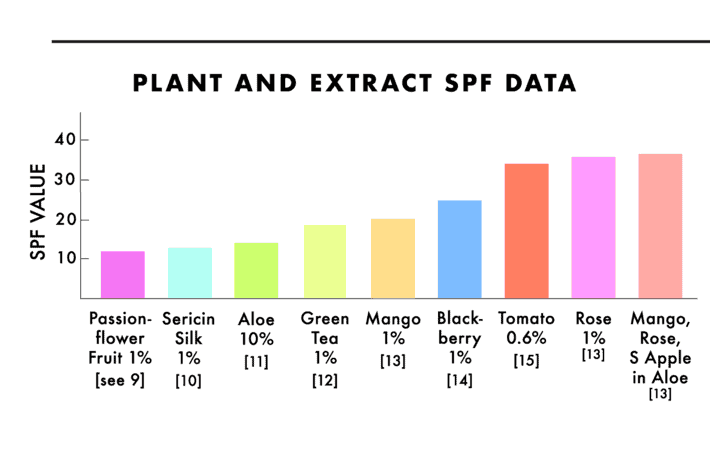
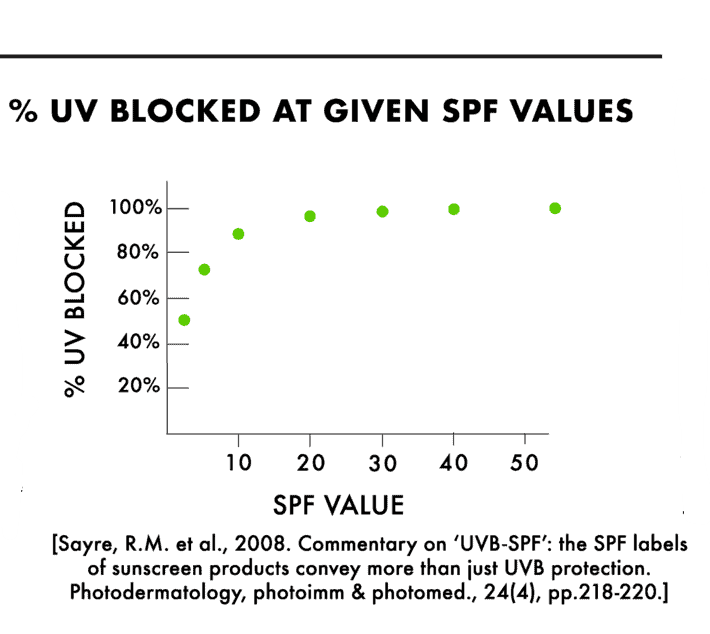
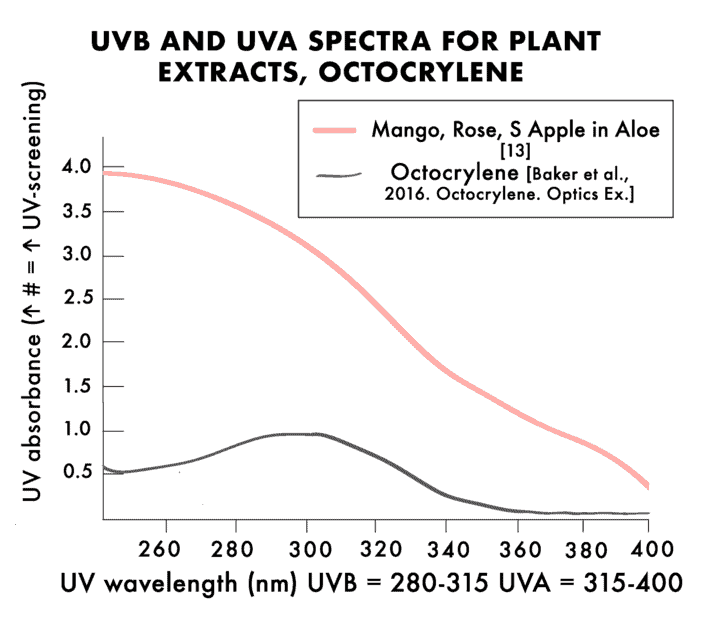
Graphics by Kate Noonan. A note from Kate: SPF of these plants was determined with the same protocols used to evaluate the UVB and UVA blocking og FDA regulated sunscreens, the FDA in vitro method and ISO method. Their antioxidant activity was measured with the standard assays—ORAC, HORAC, DPPH, Folin-Ciocalteu, FRAP and Oyaizu.
A couple of X factors here, as always 😜.
Of course, ingredient percentages play a huge role in effectiveness. Most of the time brands won’t disclose this proprietary information—that’s standard. But what we can take away from this list is that even low percentages of ingredients like mango, passion flower and green tea have pretty significant SPF values.
Another X factor (*pushes glasses up on bridge of nose*) is the “globule diameter” or the droplet size of the ingredient. This plays a part in effectiveness too. Kate explains, “when hair sunscreens are a fine emulsion formula, the smaller globules boost SPF by improved UV reflection/scattering (Mie scattering), and the UV-blocking plant extracts have improved photostability in the globules” [18–22].
As a consumer, one clue you can use to determine droplet size is to look for plant emulsifiers like baobab seed, galactoarabinan, guar, xanthan gum or caprylyl/capryl glucoside on the label. These ingredients indicate the formula is a microemulsion, meaning all of the smaller droplets contain the active plant extracts.
Lastly, application is also an X factor…can you really coat every strand evenly and are you willing to reapply as needed? All of this to say, we are taking ballpark figures with a lot of variables. But what I want you to take away from this section is: When we look at the question, Can plants be effective in protecting your hair against UV? The answer is…YES, AND, it depends.
Reapplying hair SPF in the real world
One of the reasons it depends is due to a little factor called application and reapplication.
You know when you buy body SPF and the label advises you to reapply every 80 minutes? Well first of all, it should actually be every 40 minutes according to Cantor, a sunscreen testing lab based out of New York. Cantor reports that SPF is best reapplied every 40 min.
Of course there are other sunscreen testing labs that recommend different times like the classic “80 minutes” but the difference with Cantor’s rec is that they do most of their sunscreen testing on actual people.
I digress. The point is, proper application and reapplication is required to ensure hair is getting protected from UV. But let’s talk about the real world. After you style your hair, are you really really going to go back in and apply more product throughout the day?
I mean, let’s be honest, it’s kind of a huge nuisance to pump out a wet product and reapply on dry, styled hair…It’s one thing if I’m at the beach or pool with already wet hair but other than that...aintgunnadoit.
Plant-powered UV protectants for hair (hair SPF) we recommend
Let’s talk recommendations. There are a couple hair treatments that lean on the power of these plants AND meet our TNK beauty credo. These are our top three picks for hair SPF for all hair types and colors.
1. EVOLVh SuperFinish Polishing Balm | $32
Okay, I’m not going to beat around the bush here. This is BY FAR my favorite hair treatment because it literally does it all without weighing hair down or changing the texture of hair.
This is a water-based treatment that’s like adding nothing, but it’s like adding everything. Check it out: EVOLVh’s SuperFinish Polishing Balm defrizzes, adds moisture, softness, shine, strength, prevents breakage, splitting AND provides UV and heat protection. I know. I KNOW!
Here we see sericin, a silk protein, and passionflower extract are the dominant UV protection in this formula [9,10].
I checked in with EVOLVh’s chemist and they confirmed that EVOLVh’s SuperFinish Polishing Balm offers about 45 minutes of UV protection (which is a timeframe we now know to be on par with SPF in general).
I add a dollop of this to my hair before every blow dry and it leaves my hair super shiny and soft. (So soft!)
EVOLVH SuperFinish Polishing Balm Pros:
- Offers UV protection via sericin and passionflower
- Super lightweight
- Also a heat protectant
- Defrizzes
- Detangles
- Adds shine
- Hydrates
- Adds softness
- Prevents breakage because sericin aminos bond with hair cuticle
- Available in a trial size
- Has a subtle scent that smells fresh
EVOLVH SuperFinish Polishing Balm Cons:
- Comes in a pump, not a spray, so it’s difficult to reapply on dry hair.
SAVE: NEWKNEW15 will save you 15% on your first order. And, check out my Evolvh haircare review for more recs from this line.
RELATED: Read my review on the best heat protectant.
2. Innersense Hair Love Prep Spray | $28
Just like SuperFinish, Innersense’s Hair Love Prep Spray is also a UV AND heat protectant. However, this one also adds body and a little grab for styling too.
This water-based formula is also lightweight, but feels a little more textured and oilier than SuperFinish. Probably because it’s designed to add body, so this makes sense.
Love that this comes in a spray because it makes reapplying easier throughout the day. But it does spray out a little bubbly, leaving bubbles of product in your hair (see photo above for a real-life example). This is not a problem before blow drying because the bubbles pop and visibly disappear as you blow dry. But if you are reapplying throughout the day, be prepared to work it through your hair with your hands.
This product uses baobab seed and rooibos to provide protection against all aggressors including UV and free radicals [11,16,17,23]. And, in addition, we also see galactoarabinan, which is a known SPF booster [18].
I also checked in with Innersense and they said Hair Love Prep Spray is “a general protectant against environmental factors, with baobab and angelica root to help prepare hair for thermal, UV and environmental exposure.” They did not comment on how long the UV protection lasts. We also didn’t see angelica root listed in the ingredient deck and emailed to check. (Will update here when we hear back.)
I like spritzing my hair before blow drying. I don’t like reapplying this product as it goes on chunky.
Innersense’s Hair Love Prep Spray Pros:
- Provides UV protection via baobab seed and rooibos
- Comes in a pump
- Also available in a trial size
- Adds body
- Also protects against heat
- Strengthens
- Adds shine
- Has a subtle orangey scent
Innersense’s Hair Love Prep Spray Cons:
- May weigh down fine hair
- Harder to reapply to dry hair because it leaves bubbles
- Some people will like the final texture; some won’t
3. Rahua Hydration Detangler + UV Barrier | $32
Rahua’s Hydration Detangler + UV Barrier is another multi-functional hair treatment including UV protectant. In addition to protecting hair from UV, it also softens hair, smooths frizz and prevents breakage and damage.
This formula stands out to us because it utilizes the highest-scoring SPF plant extracts, including mango, passionfruit, green tea, and aloe. These are secondary to what Rahua is claiming as their main UV defense barrier: morete (aka buriti) oil [24,25].
I’m also obsessed with the scent. It’s not overpowering, but it actually smells good as it’s scented with tropical aromas of passion fruit and mango.
This sits creamy in the bottle, but it’s easy to apply and reapply as it pumps out in a mist.
The easy reapplication and multiple UV defence barriers make this our TOP PICK for a plant-powered hair SPF.
Rahua’s Hydration Detangler + UV Barrier Pros:
- Offers UV protection via mango, passionfruit, green tea and aloe
- Easy to apply and reapply
- Comes in a pump
- Detangles
- Lightweight
- Defrizzes
- Hydrates
- Adds softness
- Prevents breakage
- Smells so good
- Trial size available
Rahua’s Hydration Detangler + UV Barrier Cons:
- Not a heat protectant
- Not designed to add shine
FAQs about hair SPF
Everyone with hair, regardless of hair color, can benefit from UV protection for their hair. When hair is exposed to UV, it breaks down that keratin—specifically the part that gives hair its strength and shine. UV also fades hair color and can create hair-yellowing. Learn more.
Use products rich in UV-blocking plant extracts to keep hair strong and glossy, which is supported in dermatology research. Learn more.
Hair products with plant extracts that block UVB and UVA and neutralize radicals protect hair health and color. Learn more.
Our top three picks are 1) EVOLVh SuperFinish Polishing Balm 2) Innersense Hair Love Prep Spray and 3) Rahua Hydration Detangler + UV Barrier. Learn why we chose them here.
A hair SPF is a great option. Learn why here.
Yes, however there are better options available that won’t turn your hair white and greasy. Learn what they are here.
Do you have a favorite UV protectant for your hair?

TNK Team Note: This article contains affiliate links. TNK uses affiliate links as a source for revenue to fund operations of the business and to be less dependent on branded content. TNK stands behind all product recommendations. Still have questions about these links or our process? Feel free to email us.
REFERENCES:
1. Lee, W.S., 2009. Photoaggravation of hair aging. International journal of trichology, 2009 1(2), p.94.
2. Chen, Y., Li, Q., Zhang, W.P., Cui, J.J. and Wu, X.J., 2013. Photoprotection of Asian human hair exposed to sunlight radiation. In Advanced Materials Research (Vol. 821, pp. 111-118). Trans Tech Publications Ltd.
3. Chen, Y., Li, Q., Zhang, W.P., Cui, J.J. and Wu, X.J., 2013. Effect of honeysuckle extract for color protection of human hair exposed to sunlight radiation. In Advanced Materials Research (Vol. 821, pp. 28-31). Trans Tech Publications Ltd.
4. Nogueira, A.C.S. and Joekes, I., 2004. Hair color changes and protein damage caused by ultraviolet radiation. Journal of photochemistry and photobiology B: Biology, 74(2-3), pp.109-117.
5. Šebetić, K., Sjerobabski Masnec, I., Čavka, V., Biljan, D. and Krolo, I., 2008. UV damage of the hair. Collegium antropologicum, 32(2), pp.163-165.
6. Afaq, F. and K Katiyar, S., 2011. Polyphenols: skin photoprotection and inhibition of photocarcinogenesis. Mini reviews in medicinal chemistry, 11(14), pp.1200-1215. (In vivo and in vitro data on topically applied plant polyphenols blocking UV)
7. Stevanato, R., Bertelle, M. and Fabris, S., 2014. Photoprotective characteristics of natural antioxidant polyphenols. Regulatory Toxicology and Pharmacology, 69(1), pp.71-77.
8. Daud, F.S. and Kulkarni, S.B., 2011. Comparative evaluation of photo-protective effect of Aloe vera Tourn. ex Linn. on UV damage in different Asian hair types.
9. Ribeiro, T.D.S., 2019. Desenvolvimento de protetor solar contendo extrato etanólico de passiflora. (Passionflower Fruit SPF)
10. KÜÇÜK, Ş. and ÇALIŞKAN, U.K., Natural Sun Protection Effect of Silk Peptides. In I. International Aromatic Plants and Cosmetic Symposium (p. 70). (Sericin SPF)
11. Rodrigues, L.R. and Jose, J., 2020. Exploring the photo protective potential of solid lipid nanoparticle-based sunscreen cream containing Aloe vera. Environmental Science and Pollution Research, 27(17), pp.20876-20888. (Aloe SPF)
12. Kaur, C.D. and Saraf, S., 2011. Photochemoprotective activity of alcoholic extract of Camellia sinensis. International journal of pharmacology, 7(3), pp.400-404. (Green Tea SPF)
13. Patel, I. and Mashru, R., 2020. Development of herbal SPF formulation. Journal of Pharmacognosy and Phytochemistry, 9(1), pp.40-44. (Mango, rose, stone apple, separately and in aloe gel SPF)
14. Gunarti, N., Aisyah, I. and Lia, F., 2021, February. Physical Stability Test Sunscreen Gel Extracts Blackberry Fruit (rubus fruticosus l.). In IOP Conference Series: Materials Science and Engineering (Vol. 1071, No. 1, p. 012011). IOP Publishing. (Blackberry SPF)
15. Sopyan, I., Gozali, D. and Tiassetiana, S., 2018. Formulation of tomato extracts (Solanum lycopersicum L.) as a sunscreen lotion. National Journal of Physiology, Pharmacy and Pharmacology, 8(3), pp.453-458. (Tomato SPF)
16. Gimba, S.N., Anka, Z.M., Bulakarima, H.U. and Kachallah, F., 2019. Pharmacological Activities of Baobab (Adansonia digitata). (Baobab SPF)
17. Jung K, Seifert M, Herrling T. Antioxidants for the Stabilization of Sunscreen. SÖFW-Journal. 2012;138(10). (Rooibos SPF)
18. KASPRZYK, E. and SIEGLER, L., 2006. Galactoarabinan as a natural SPF booster. Cosmetics and toiletries, 121(10). (Galactoarabinan)
19. Guerreiro, B.M., Freitas, F., Lima, J.C., Silva, J.C. and Reis, M.A., 2021. Photoprotective effect of the fucose-containing polysaccharide FucoPol. Carbohydrate Polymers, 259, p.117761. (Seed extracts are fucose containing polysaccharides that have boost SPF)
20. Binks, B.P., Fletcher, P.D., Johnson, A.J., Marinopoulos, I., Crowther, J. and Thompson, M.A., 2017. How the sun protection factor (SPF) of sunscreen films change during solar irradiation. Journal of Photochemistry and Photobiology A: Chemistry, 333, pp.186-199. (Mie scattering, Beer-Lambert Law, SPF efficacy of microemulsions)
21. Volpe, V., Nascimento, D.S., Insausti, M. and Grünhut, M., 2018. Octyl p-methoxycinnamate loaded microemulsion based on Ocimum basilicum essential oil. Characterization and analytical studies for potential cosmetic applications. Colloids and Surfaces A: Physicochemical and Engineering Aspects, 546, pp.285-292. (Microemulsion = better photostability of UV-blocking ingredients, certain plant extracts are cinnamates too)
22. Lécureux, M., Enoch, S., Deumié, C. and Tayeb, G., 2014. Electromagnetic sunscreen model: implementation and comparison between several methods: step-film model, differential method, Mie scattering, and scattering by a set of parallel cylinders. Applied optics, 53(28), pp.6537-6545.
23. Santa-María, C., Revilla, E., Miramontes, E., Bautista, J., García-Martínez, A., Romero, E., Carballo, M. and Parrado, J., 2013. Protection against free radicals (UVB irradiation) of a water-soluble enzymatic extract from rice bran. Study using human keratinocyte monolayer and reconstructed human epidermis. In Bioactive Dietary Factors and Plant Extracts in Dermatology (pp. 215-225). Humana Press, Totowa, NJ. (Rice protein is photo-protective under UVA and UVB).
24. Zanatta, C.F., Mitjans, M., Urgatondo, V., Rocha-Filho, P.A. and Vinardell, M.P., 2010. Photoprotective potential of emulsions formulated with Buriti oil (Mauritia flexuosa) against UV irradiation on keratinocytes and fibroblasts cell lines. Food and chemical toxicology, 48(1), pp.70-75. (Morete/Buriti SPF)
25. Durães, J.A., Drummond, A.L., Pimentel, T.A.P.F., Murta, M.M., Bicalho, F.D.S., Moreira, S.G.C. and Sales, M.A., 2006. Absorption and photoluminescence of Buriti oil/polystyrene and Buriti oil/poly (methyl methacrylate) blends. European Polymer Journal, 42(12), pp.3324-3332. (Morete/Buriti UV-blocking)

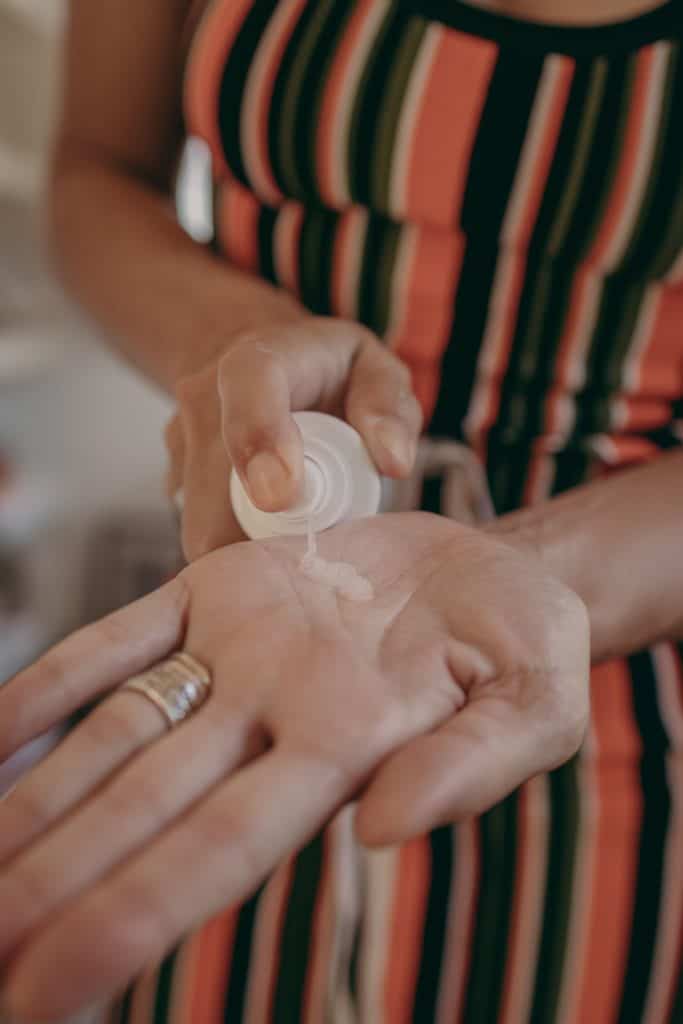

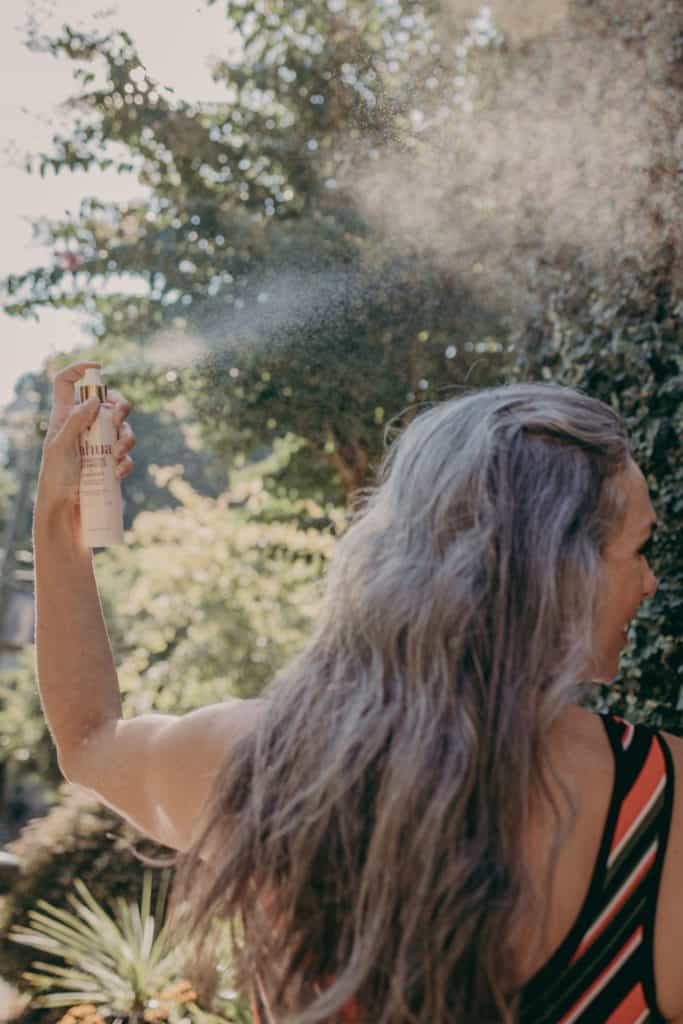
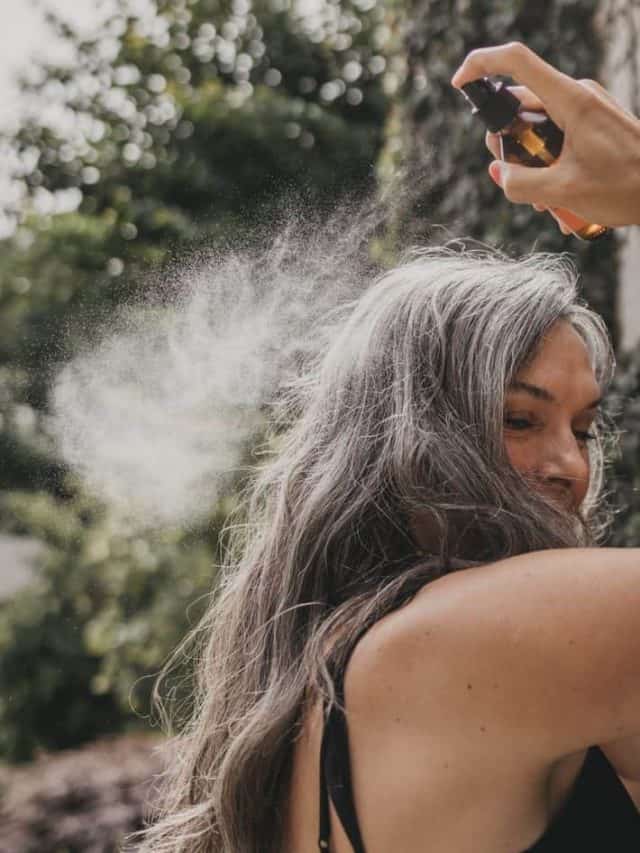
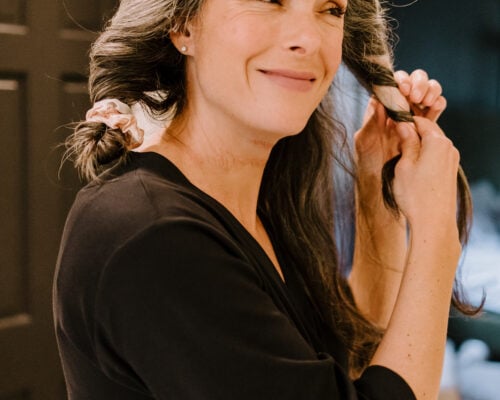
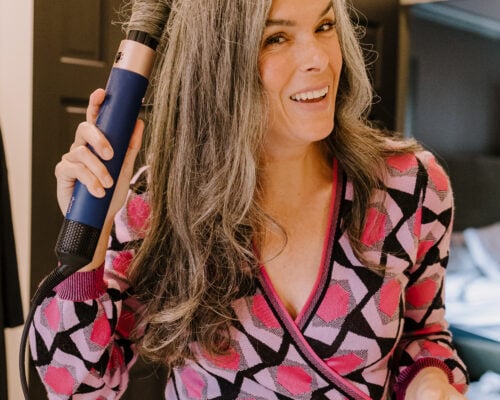
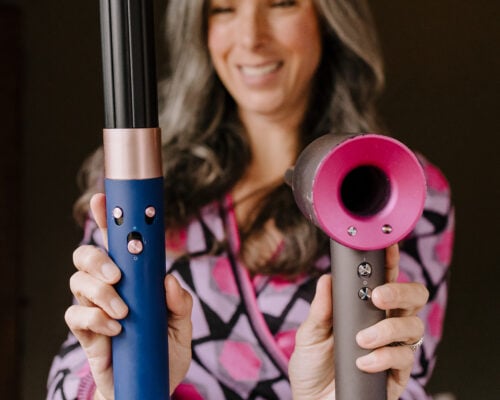
Taylor
August 31, 2021Woohoo! This was my recommendation back at the beginning of summer when you were looking for recs and testimonials. Go Rahua!
Taylor
June 13, 2022Just want to add a comment to say that there actually *IS* a trial size/travel size available of Rahua’s UV spray! Highly recommend: https://rahua.com/products/hydration-detangler-uv-barrier-travel-size
Lisa Fennessy
July 5, 2022Thank you Taylor! Amended! xo
Debbie
November 9, 2022Hi, Lisa. Thank you for this article. I want to ask, since you applied SPF on your hair, do you have to wash your hair everyday? I have wavy hair and I wash my hair twice a week only. Thank you in advance.
Lisa Fennessy
November 11, 2022Hi Debbie! All three of these hair SPF recs sit very lightly in the hair. I only apply them right before I dry my hair, like the same as a styling product…I honestly don’t even notice they are there. There are other hair SPFs that you can apply throughout the day and I would assume those would build up so I totally get the question. Hope this helps! Lisa